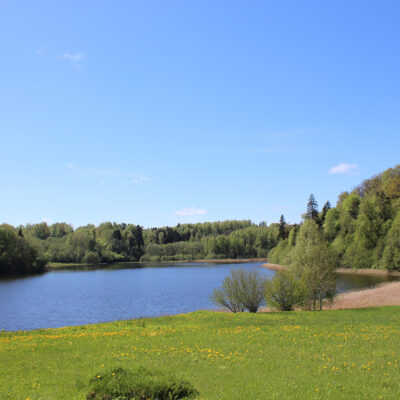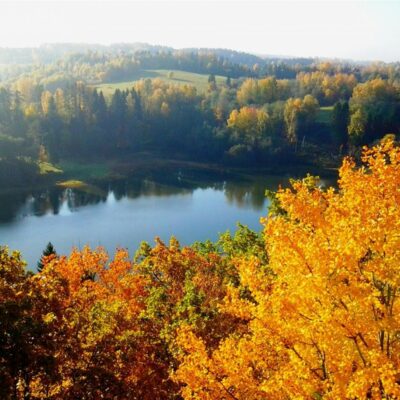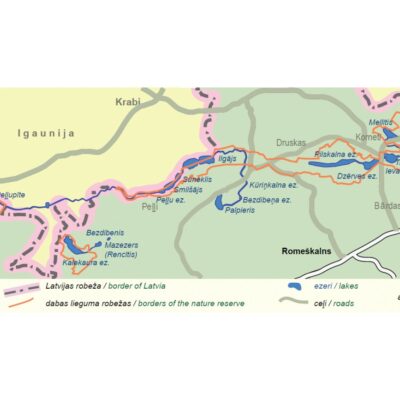In the Korneti-Peļļi subglacial ravines there is a row of small, narrow, long, deep lakes which are connected by a flow. In general, there are 16 lakes: 15 of them are located in Latvia and 12 of them have been included in the nature reserve «Korneti-Peļļi». From the row of lakes which connects Lake Bazdibenis, Lake Rencītis and Lake Kalekaura, only the latter has been included in the territory of the nature reserve. The Nature Reserve «Korneti-Peļļi» consists of three separate parts. Lake Pilskalna, Lake Dzērves, Lake Ievas, Lake Trumulītis, Lake Raipals, Lake Mellītis, Lake Lielais Baltiņš and Lake Mazais Baltiņš are located in the biggest part of the nature reserve. In its northern part, there is Lake Ilgājs, Lake Smilšājs and Lake Sūneklis. To the west from Lake Sūneklis there is Lake Peļļu which is not included in the territory of the nature reserve. The biggest lake is Lake Raipals which covers the area of 36.1 ha and is 2.7 km long and 35 m deep. The smallest one is Lake Mazais Baltiņš occupying 3.2 ha, but its depth is up to 32 m. According to its physical-chemical and biological indicators, Mazais Baltiņš has been evaluated as a slightly eutrophic lake with a good water quality. The other lakes in the nature reserve and Lake Peļļu are slightly eutrophic – eutrophic clear water lakes. Transparency and colour indicate the water quality – the greater the transparency, the cleaner the water in the lake. The more bluish or bluish-green the water is, the poorer it is in organic substances. As the subglacial ravine does not have a real longitudinal fall, the rows of lakes are made by different rivers. For example, Lake Pilskalna, Lake Dzērves, Lake Ievas and Lake Raipals flow into Lake Trumulītis, which is the source of the river Pērļupīte or Lankupīte. The waters of the territory belong to the basin of the river Gauja. The river Peļļupīte is a tributary of the river Vaidava, whereas the Vaidava and the river Pērļupīte flow into the Mustjegi which is a tributary of the Gauja.



